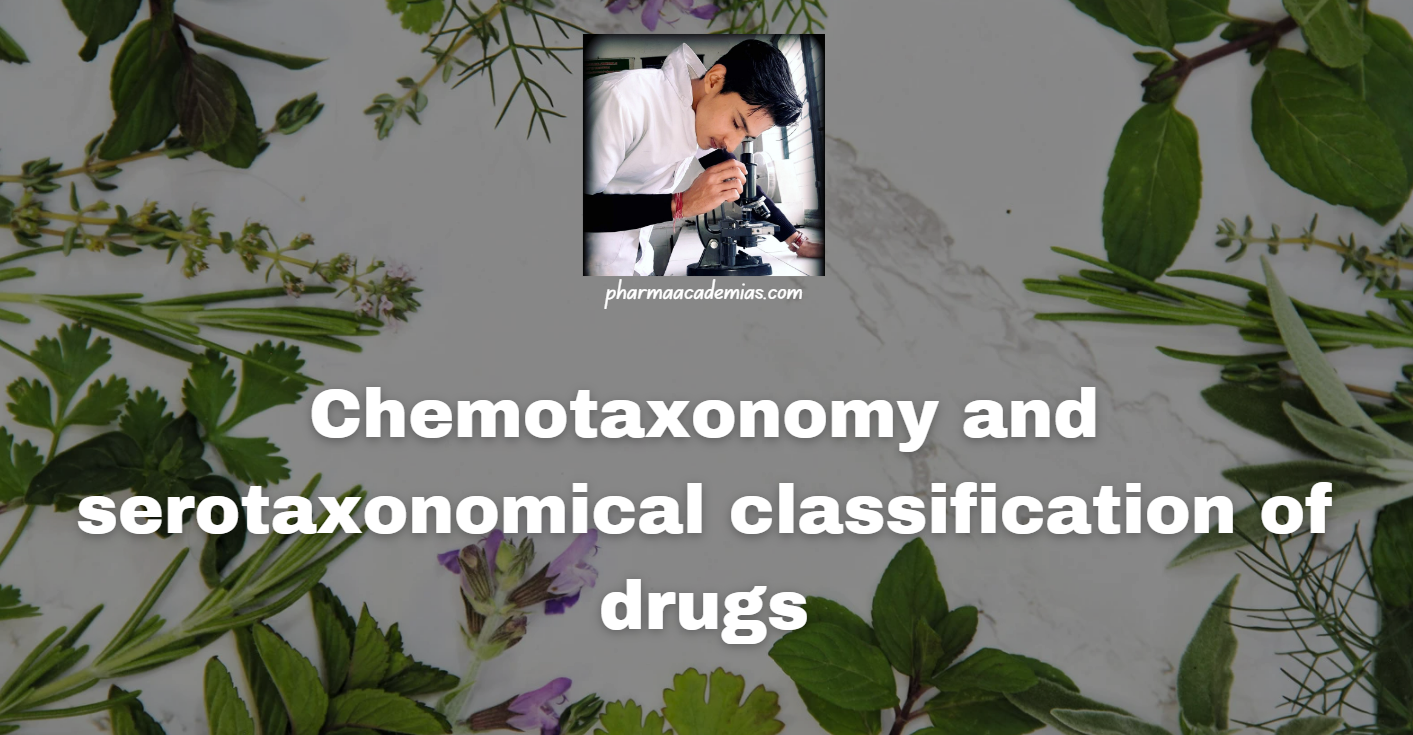chemotaxonomy and serotaxonomy are two approaches used to classify drugs based on their chemical and serological characteristics, respectively, in relation to their natural sources. These classification systems help in understanding the relationships between drugs, their botanical origins, and their pharmacological properties. Let’s delve into a detailed note on chemotaxonomy and serotaxonomy:
Chemotaxonomy
Chemotaxonomy, also known as chemical taxonomy, classifies drugs based on their chemical composition, particularly focusing on secondary metabolites present in plants, which are responsible for their pharmacological effects.
Key Components
1. Secondary Metabolites: These are compounds synthesized by plants for purposes other than growth and development. Secondary metabolites often exhibit pharmacological activity and contribute to the medicinal properties of plants.
2. Chemical Classes: Drugs are categorized into chemical classes based on shared chemical structures and functional groups. Common chemical classes include alkaloids, flavonoids, terpenoids, phenolics, and glycosides.
Examples:
1. Alkaloids: Morphine from opium poppy (Papaver somniferum) is an alkaloid used as an analgesic.
2. Flavonoids: Quercetin from onions (Allium cepa) exhibits antioxidant and anti-inflammatory properties.
3. Terpenoids: Artemisinin from Artemisia annua is a sesquiterpene lactone with antimalarial activity.
4. Phenolics: Resveratrol from grapes (Vitis vinifera) has antioxidant and cardioprotective effects.
5. Glycosides: Digoxin from foxglove (Digitalis purpurea) is a cardiac glycoside used to treat heart failure.
Significance
1. Botanical Identification: Helps in the identification and classification of medicinal plants based on their chemical profiles.
2. Pharmacological Understanding: Provides insights into the pharmacological properties and therapeutic uses of medicinal plants based on their chemical constituents.
3. Drug Discovery: Facilitates the discovery of new drugs from natural sources by identifying bioactive compounds with potential therapeutic applications.
4. Quality Control: Supports the standardization and quality control of herbal medicines by identifying key chemical markers for authentication and purity assessment.
Serotaxonomy
Serotaxonomy, also known as serological taxonomy, classifies drugs based on their serological characteristics, particularly focusing on antigen-antibody reactions between drugs and specific antibodies.
Key Components
1. Antigens: These are substances that stimulate the production of antibodies in the immune system. In serotaxonomy, drugs serve as antigens that elicit specific immune responses.
2. Antibodies: These are proteins produced by the immune system in response to antigens. Antibodies recognize and bind to specific antigens, forming antigen-antibody complexes.
Examples:
1. Penicillin: Antibodies produced against penicillin (from Penicillium mold) can be used for serological identification and classification of penicillin-containing drugs.
2. Digitalis Glycosides: Antibodies raised against digitalis glycosides (e.g., digoxin from foxglove) can be used for serological detection and quantification of these drugs in biological samples.
Significance
1. Drug Authentication: Helps in the authentication and identification of drugs based on their serological reactivity with specific antibodies.
2. Quality Control: Supports the quality control and standardization of herbal medicines by verifying the presence and concentration of specific drugs or drug classes.
3. Safety Assessment: Facilitates the detection of adulterants or contaminants in herbal medicines by serological testing for specific drugs or toxins.
4. Research and Development: Provides a tool for research on the immunological properties of drugs and their interactions with the immune system.
Conclusion:
Chemotaxonomy and serotaxonomy are valuable approaches in pharmacognosy for classifying drugs based on their chemical and serological characteristics, respectively. By understanding the chemical composition and serological reactivity of drugs, researchers and healthcare professionals can gain insights into their botanical origins, pharmacological properties, and therapeutic uses. These classification systems play crucial roles in drug discovery, quality control, safety assessment, and research in the field of pharmacognosy.

